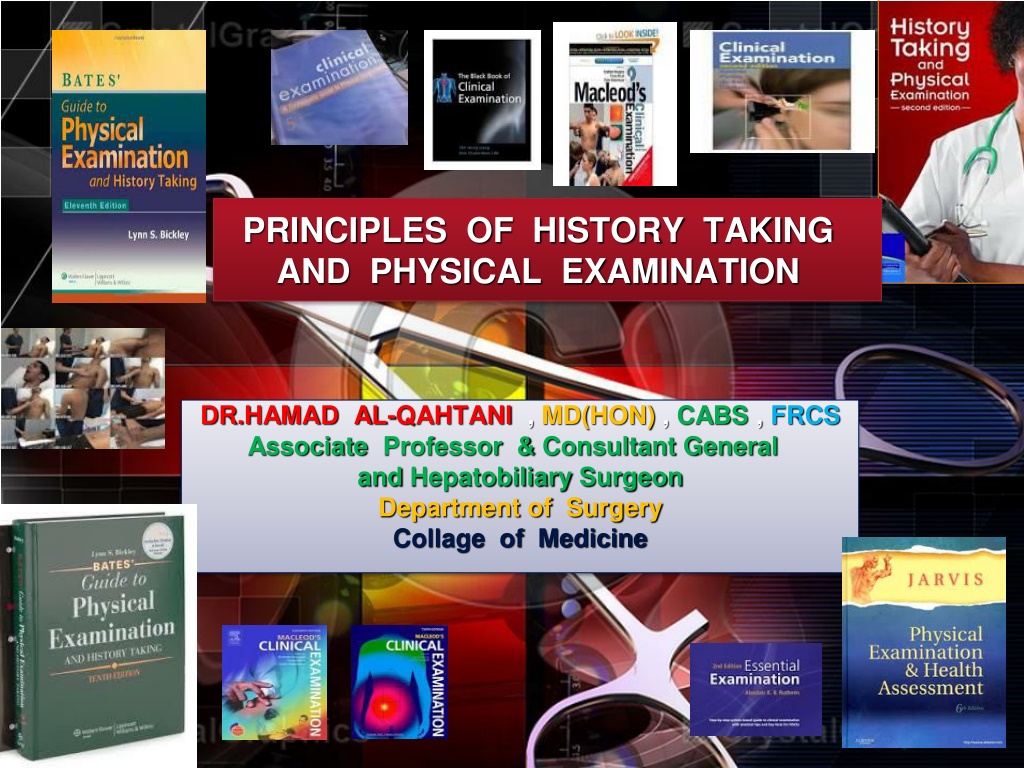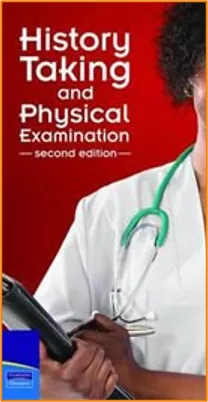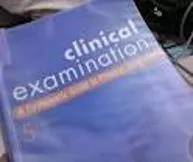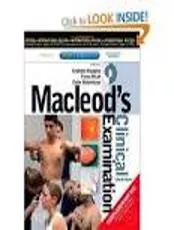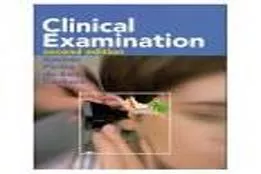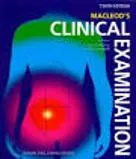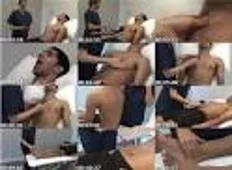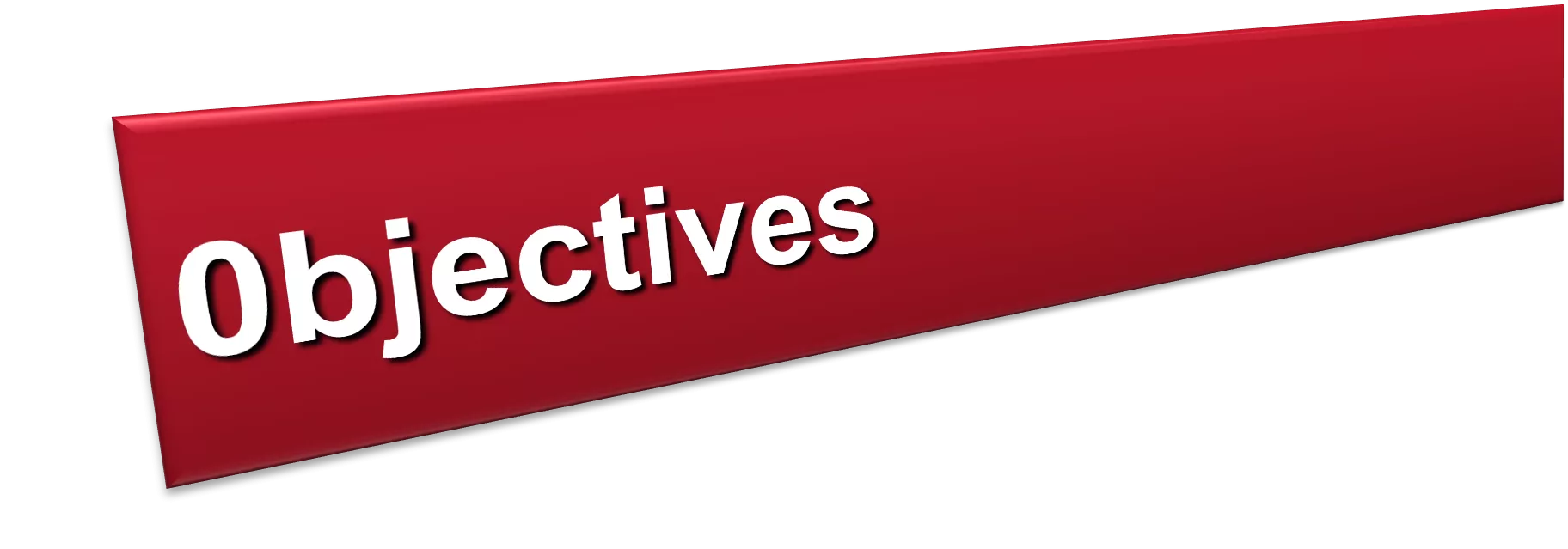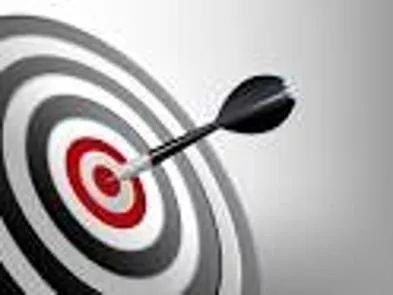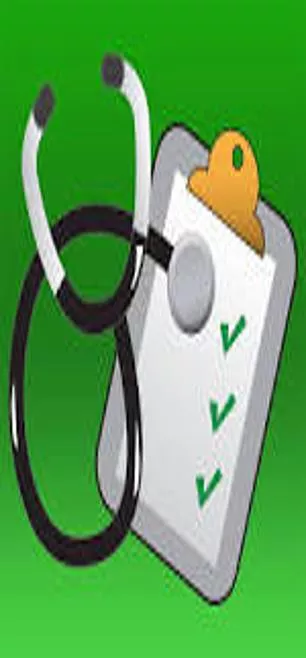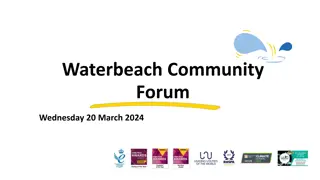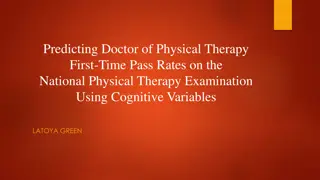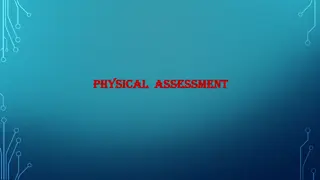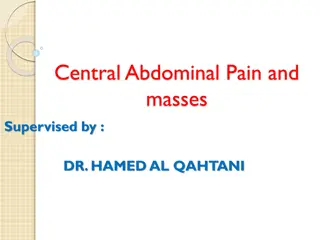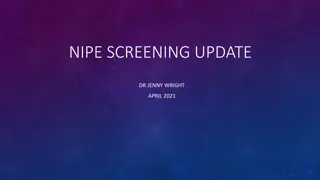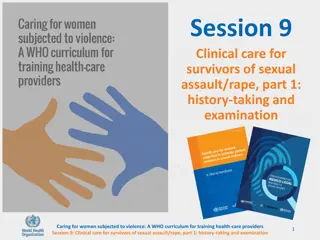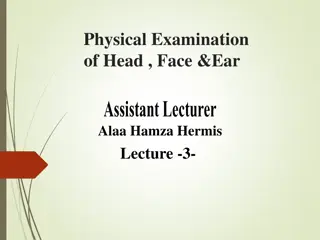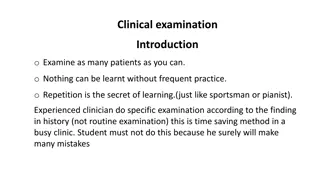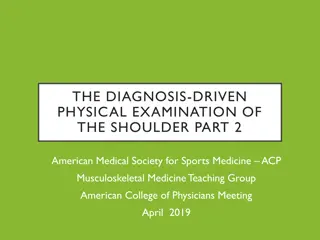Principles of History Taking and Physical Examination by Dr. Hamad Al-Qahtani, MD
Learn the essential principles of history taking and physical examination as outlined by Dr. Hamad Al-Qahtani, an Associate Professor and Consultant General and Hepatobiliary Surgeon. The guide emphasizes the importance of establishing rapport with patients, the skill of listening to patient narratives, and the significance of obtaining accurate information for diagnosis. It provides practical tips on conducting interviews, making notes, and approaching language barriers during assessments.
Uploaded on Sep 23, 2024 | 0 Views
Download Presentation

Please find below an Image/Link to download the presentation.
The content on the website is provided AS IS for your information and personal use only. It may not be sold, licensed, or shared on other websites without obtaining consent from the author. Download presentation by click this link. If you encounter any issues during the download, it is possible that the publisher has removed the file from their server.
E N D
Presentation Transcript
PRINCIPLES OF HISTORY TAKING AND PHYSICAL EXAMINATION DR.HAMAD AL-QAHTANI , MD(HON) , CABS , FRCS Associate Professor & Consultant General and Hepatobiliary Surgeon Department of Surgery Collage of Medicine
A. GENERAL PRINCIPLES 1. It is the single most important factor in making a diagnosis . It direct the clinician to search for the physical abnormalities .
2. Introduce yourself to the patient and establish rapport with him . 3. Sit down either beside the patient on chair or even on the bed , and give the impression that the interview will be unhurried one .
4. professional manner will have lasting effect . 5. Avoid an unkind and thoughtless approach in questioning and examining the patient. 6. An extensive knowledge of medical facts is not useful unless a doctor is able to extract accurate information from the patient .
7. Obtaining the history requires a lot of practice and depends very much on doctor/patient relationship . 8. The greatest skill is to listen to what the patient volunteers . This is the key to the diagnosis . The clinician must not shape , elaborate and direct the history into a particular category just so that it fits classical package
9. It is useful to make rough notes while questioning the patient . 10.Experienced clinician rarely begin the routine physical examination without some suspicion about the diagnosis . 11.If the patients is not fluent in your language , you may require interpreter , and in that case keep your questions , clear , short , and simple .
B. GENERAL HISTORY TAKING 1. Date : Time : Place : 2. Personal information (put it in one sentence) : Name , Age , Marital status , Occupation (past and present) , Address .
3. Chief Complaints : This must be put in a short statement in the patient's own word . If there are more than one complaint , list them in order of severity or duration . Include the duration of the chief compliant .
4. History of present illness : Take details of each problems using mainly the patient's own words , in chronological order by dates . Ask the symptoms of involved system and any previous treatment , procedures or surgery for the same illness .
5.Systemic review Regurgitation ( it is the effortless return of gastric contents into the mouth ) ? Nausea ? Vomiting ? Haematemesis ? Dysphagia (swallowing difficulty ) ? Odynophagia ( painful swallowing ) ? Heartburn ( It is a retrosternal burning sensation caused by the reflux of gastric acid into the esophagus ) ? Indigestion (vague symptom), ask exactly what the patient means ? Abdominal pain ? Abdominal distension ? e.g. Gastrointestinal tract Appetite ? history of recent diet ? Weight changes ? Taste changes and teeth problems ? Water brash (this is sudden filling of the mouth with watery fluid - saliva ) ? Acid brash ( this is sudden filling of the mouth with acid tasting fluid gastric acid ) ?
Flatulence Constipation ? Diarrhea ? Tenesmus ( urgent , painful but unproductive desire to pass stool ) ? Painful defaecation ? Rectal bleeding ( haematochezia or melena ) and mucus ? Incontinence (flatus, fluid or faeces) ? Prolapse ( dose anything comes out of the anus on straining ) ? Jaundice ( yellow eyes or skin ) ? Dark urine ? pale stools ?
6. Past Medical and Surgical History Ask about any previous illness or operations in details
7. Drugs an Allergies History Ask about any drugs that has been taken in the past and for what condition . Inquire about the doses and duration . Ask about the immunization and Allergy .
8. Family History Ask about the state of health and cause of death of the parents , siblings and other close relative .
9. Social and Habits History Marital status , level of education , living accommodation , past and present occupation , exposure to hazards , traveling abroad , smoking in details , alcohol in details , recreational activities and drug abuse .
C . DESCRIPTION OF IMPORTANT SYMPTOMS IN SURGICAL PATIENTS Appetite Increased ? ,Unchanged ? ,Decreased ( is it caused by a look of desire to eat or is it because eating always causes pain or vomiting ) ?
mucus, slime , Prolapse , Incontinence , Tenesmus , Change of skin color , Cough , Sputum , Haemoptysis , Dyspnea , Chest pain , Palpitation , Peripheral vascular symptoms Diet , Teeth and taste , Dysphagia , Regurgitation , Flatulence (belching) , Heart burn , Vomiting , Haematemesis , Abdominal pain or indigestion , Abdominal distension , Defecation , Diarrhea , Rectal bleeding , Flatus,
D. HISTORY OF THE PAIN . Pain is an indicator of disease and is frequently the presenting symptom in every body system. It varies with the disease process and the tissue involved, and may be characteristic and diagnostic.
Each doctor must therefore develop an efficient and reliable method of questioning the patient closely about each of the following features : 1) Site 2) Time of onset 3) Mode of onset 4) Severity 5) Nature 6) Progression of the pain 7) The end of the pain 8) Duration 9) Relieving factors 10)Exacerbating factors 11)Radiation 12)The cause of the pain
A. Radiating Pain : Is the extension of the pain to another site whilst the initial pain persist e.g. Posterior penetrating duodenal ulcer will have persistent pain in the epigastrium at the same time patient will feel pain in the back.
B. Referred pain : Is a pain which is felt at a distance from its source, caused by the inability of the central nervous system to distinguish between visceral and somatic sensory impulses e.g. Inflammation of the diaphragm will cause a pain which is felt at the tip of the shoulder.
C. Tenderness : Is a pain which occurs in response to a stimulus, such as pressure from the doctor s hand, or forced movement. It is possible for a patient to be lying without pain and yet have an area of tenderness. Thus, tenderness can be both a symptom and physical sign. The patient feels pain-the doctor elicits tenderness
E. HISTORY OF THE LUMP Most patients should be able to give you a helpful history about the clinical features of the lump because they frequently feel it . In a patient with lump you should take complete history as usual and ask the following questions in the history of present illness.
1. When was the lump first noticed ? ( e.g. the lump was first noticed 3 months ago ) 2. What made the patient notice the lump? (e.g. pain , during washing or someone else notice the lump ) 3. What are the symptoms related to the lump? ( describe the detailed history of each associated symptoms e.g. pain , dysphagia )
4. Has the lump changed since it was first noticed ? (e.g. size, shape , color , tenderness ) 5. Does the lump ever disappear? What makes the lump to reappear ? e.g. hernia may disappear on lying down and reappearing during exercise ). (
6. Has the patient ever had any other lumps ? ( important connecting history may exists between the present lump and previous or coexisting lumps ) 7. What does the patient think caused the lump? ( the lump may follow trauma or surgery e.g. hernia )
8) Some lumps may discharge, in which case question the quantity, colour, consistency and smell of the contents. 9) What treatment has been suggested or administered?
E . HISTORY OF THE ULCER An ulcer is a persistent discontinuity of an epithelial surface that can occur in the skin or mucosa of the alimentary and respiratory tracts. In a patient with ulcer take complete history as usual and ask the following questions in the history of present illness ( similar pattern like the questions of the lump) .
1. When the ulcer was first noticed ? neurotrophic ulcer (painless ulcer) may present for sometime before it was noticed by the patient 2. What drew the patient s attention to the ulcer? pain, discharges, bleeding or smell?
3. What are the symptoms of the ulcer? . Describe the features of the history of each symptom . 4. How has the ulcer changed since it first appeared? . Inquire about the changes in the pain , size , shape , discharges . Ask if the ulcer has healed and broken down again .
5. Has the patient ever had similar ulcer on the same site or elsewhere?. Obtain a detailed history of any previous or recent other ulcers . 6. What treatment has been suggested or administered? 7. What does the patient think caused the ulcer ? Most of the time due to trauma .
General principles of physical examination
1. Good appearance is essential. Have your hair cut and dress professionally and wear clean shoes. Smell should be acceptable and hands should be clean and warm (i.e. appear, talk and behave like a professional doctor). Prepare your examination equipments with you (stethoscope, a small pocket ophthalmoscope, a torch and a short patellar hammer).
2. Try to see the patient walking Try to see the patient walking into the examination room to assess for any evidence of general malaise , fatigability , breathlessness , or abnormal movement .
3. Introduce yourself Introduce yourself and ask the patient permission to examine him / her and at all stages of clinical examination explain to the patient what you are going to do and why you are doing it .
4. Privacy of patients When you start examining the patient , ask the relatives and friends to leave the examination room , further questions about the changes in health and behavior not noticed previously by the patient can be asked in private .
5. expose Fully expose the parts of the body that you wish to examine and remember to compare both sides.
6. Before the specific examination of the regions of the body begins,. Make a conscious effort and take the time to consider the patient s appearance including the face, hands and body. Certain faces and body habitus are diagnostic or nearly so. Important relevant signs may be missed unless this is done. For example, the patient with loss of weight may not be identified as having thyrotoxicosis unless the eye signs are noticed.
7. Do the proper examination. Do the proper examination and before palpation never forget to ask if there is any tenderness and the patient should be comfortable at all times during the examination. Never examine patients as if you are manipulating experimental animals and remember that if the patient shouts out, you have failed your examination.
8. to learn the routine by heart The easiest way to ensure that you perform a complete examination is to learn the routine by heart and repeat it to yourself during the examination. Always keep to the basic pattern of looking, feeling, tapping and listening (inspection, palpation, percussion, auscultation), whatever you are examining .
9. methodically step The doctor should go through his patient methodically step by step according to a well practiced routine, which should become instinctive, before reaching his final conclusion.
10 . best to examine first the part of the body Whilst keeping to the routine it is, however often best to examine first the part of the body that is the source of the patient s complaint.
11. spot as many abnormal physical signs You should try to spot as many abnormal physical signs as you can (even if not relevant to patient s main complaint) and therefore must examine the patient as a whole and not just part related to his or her complaint. However, you must be quick and comprehensive in your examination.
12. There are certain parts that you are not expected to include in the examination situation, such as a rectal/pelvic examination. However, you must indicate to the examiners that you would normally examine these areas.
13. You should express a desire to examine other systems to seek underlying causes of local conditions.
14. thank patients After finishing the examination, thank patients at the end, help them with their clothes and tuck in the sheets. A semi-naked patient left uncovered after physical examination gives the examiner a very bad impression.
15. turn to the examiner and present your findings If you are in exam , turn to the examiner and present your findings . It is usually up to you whether you talk as you examine or present your findings at the end . Practice both ways, you may be requested specifically to explain what you are doing or you may be interrupted at any stage of the examination to present your findings so far . Common sense should be stressed, e.g. Do not mention the fetus as a cause of an abdominal swelling in a male or prostatic enlargement as a cause of urinary retention in a female.
16. do not point If you are in exam , do not point on your own body or turn repeatedly to the patient while describing your findings . Give the impression that you know what you are talking about and prepare well to substantiate your answers.
